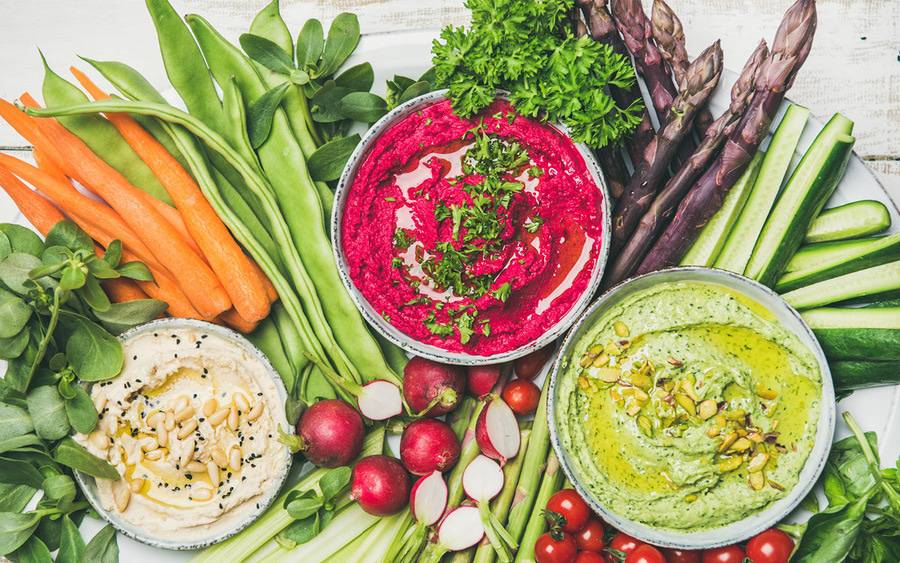How to Eat Healthy on a Budget
Seven tips for healthy eating without spending a lot

Seven tips for healthy eating without spending a lot
MyPlate is a program of the US Department of Agriculture that promotes healthy eating and provides recommendations for those on a budget.
The program supports the recommendations in the Dietary Guidelines for Americans, the federal nutrition guide that provides advice on what to eat and drink to meet nutrient needs, promote health and prevent disease. This includes regularly consuming a variety of fruits, vegetables, grains, protein food and dairy and soy alternatives.
“There are many ways to fill up half of your plate with nutritious fruits and vegetables and other important food groups without spending too much,” says Michael Varon, MD, a family medicine physician at Scripps Coastal Medical Center Jefferson in Oceanside. “Fruits and vegetables are especially important because they provide vitamins and nutrients and can help reduce your risk of certain diseases.”
Follow these seven tips for healthy eating on a budget:
1. Buy produce in season
Most Americans don’t come close to filling their plates daily with enough fruits and vegetables. Don’t let price be a reason.
Buy in-season produce, which are usually less expensive and are at their peak flavor. Learn what’s in season now. While you’re at it, learn about the health benefits of a plant-based diet or about healthy diets that work, such as the Mediterranean diet.
If you don’t mind getting your hands a little dirty, you can also plant your own superfood garden.
Also, buy only what you can eat before it spoils.
2. Plan weekly meals and stick to your shopping list
Deciding beforehand what to put on the table for the week ahead can help you decide what to put in the shopping cart. Learn about budget-friendly healthy foods and stick to your list as much as possible.
Look over what you already have in the refrigerator and cabinets. Remember to use up the most perishable items before they pass their peak. And don’t forget: leftovers can taste pretty good.
3. Include frozen and non-perishable foods
Canned and frozen fruits and vegetables last much longer than fresh produce and provide a quick way to add them to your meal. Stock up on them when you find them on sale so they’re always on hand.
“Look for frozen vegetables without added sauces, gravies, butter, or cream and packaged fruits that do not have added sugars,” Dr. Varon recommends.
4. Create budget friendly recipes
“Create a list of budget-friendly recipes to try that are healthy and that you know your family enjoys,” Dr. Varon advises.
But if you’re looking for ideas, try recipes for:
5. Resist fast food on busy days
Lack of time to prepare meals is often the main reason for eating out. If that’s the case, create a list of fast, simple healthy recipes that you can prepare at a moment’s notice at home. “These are healthy meals you can prepare in advance to heat and serve on your busiest days,” Dr. Varon says.
Remember that meals you prepare at home cost just a fraction of the price for a large meal that may be over salted or fat saturated but that you can easily find and buy at many fast-food restaurants. Dedicate the dollars you save to fresh, healthy choices at the grocers.
6. Look for variety of protein foods
Proteins are vital for the health and maintenance of your body. Many of us meet the protein recommendations for meat, poultry and eggs but not for seafood, nuts, seeds and soy products, which can help increase intake of important nutrients.
Vary your protein choices and make sure to include seafood as the main protein food at least twice a week. Seafoods are more reasonably priced when you adjust portion sizes.
If you like meat, look for lean meats. Ground beef should at least be 93 percent lean. Nuts, beans and soy products can fulfill protein requirements and are much more affordable than prime cuts of beef.
7. Shop outside the big box
Farmer’s markets, farm stands and ethnic and specialty markets frequently sell freshly harvested produce at a low cost.
Check the National Farmers Market Directory for locations near you. “Much of learning to eat healthy on a budget involves simply planning ahead and learning new shopping habits,” Dr. Varon says. “Once they become ingrained, you may be surprised by how much you save in both time and money.”